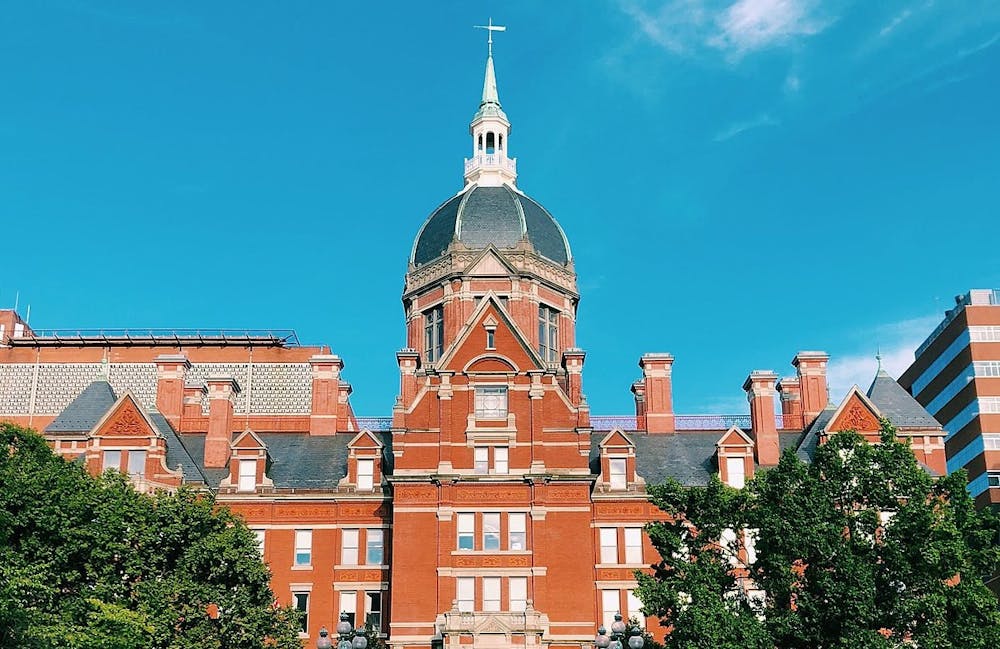At a school like Hopkins, it can seem like half of the student body is pre-med. You can’t walk through Brody Atrium without hearing someone mention shadowing, clinical research or biochemistry.
From the moment their undergraduate experience begins, pre-med students are stressing about getting into medical school. In addition to the academic obstacles they face — weed-out classes like organic chemistry and the grueling Medical College Admissions Test (MCAT) — pre-meds have a hefty price tag to look forward to. In the U.S., medical students graduate with a median debt of $200,000. To put that into perspective, the median value of a home in Baltimore is about $210,000.
In 2018, New York University made the shocking announcement that it would cover tuition for all of its medical students regardless of financial need. Since then, several other top institutions, such as the Washington University School of Medicine in St. Louis and the Columbia University Vagelos College of Physicians and Surgeons, have committed hundreds of millions of dollars to provide scholarships to medical students.
That’s great and all, but we shouldn’t have to celebrate institutions that prevent their students from graduating with hundreds of thousands of dollars of debt. It should be the standard.
While free medical school might sound like an expense this country can’t afford, the truly daunting expense on the horizon is a nationwide physician shortage.
The Association of American Medical Colleges predicts a shortage of between 37,800 and 124,000 doctors by 2034. The shortage of primary care physicians (PCPs) is of special concern, as primary care is vital to the health of a community and to reduce overall healthcare costs.
As it is, primary care doctors don’t have enough time in the day to follow nationally recommended guidelines for patient care. PCPs face more burnout and lower pay than other doctors and have mountains of paperwork to complete at the end of each day.
As the population of the U.S. continues to age, patients will need more care from their PCPs in order to manage their medical problems and medications. But doctors are getting older too, and they will eventually retire. More than 40% of active physicians in the U.S. will be 65 or older in the next decade. We are piling an increasingly heavy workload on PCPs who are already stretched too thin, and the entire American healthcare system will suffer as a result.
Access to primary care improves patient health outcomes. When patients don’t have access to PCPs, they often turn to hospital emergency departments as a last resort. The PCP shortage will only exacerbate the existing strain on emergency rooms across the country, which have been hit hard by shortages of beds and staff.
In 2019, Weill Cornell Medicine launched a program to eliminate medical school debt for students with financial need. Since then, the school has seen an increase in applications from students who are underrepresented minorities and who qualify for financial assistance. Of the first class to enter since the debt-free initiative was announced, nearly three-quarters of students qualified for the program.
What’s more, the fact that the average MCAT scores and grade point averages of the class were comparable to previous years negates the misconception that increasing socioeconomic diversity means sacrificing merit.
Eliminating medical school debt — and thereby increasing diversity — could play a vital role in mitigating the effects of the physician shortage. Medical students from low-income backgrounds are more likely to enter primary care specialties.
Further, many majority-minority areas are already suffering the impact of a PCP shortage. The odds of being a current PCP shortage area are 67% higher for neighborhoods that have a majority of Black residents.
Black Americans are suffering from decreased access to physician care, and this worsens health outcomes on top of myriad existing health disparities. But having more Black doctors could help.
When minority patients see a doctor of the same race or ethnicity, time spent together, patient understanding of cancer risk, medication adherence, wait times and other aspects of patient care improve. When Black newborns in the hospital are cared for by Black physicians, their mortality rates decrease by between 39% and 58%.
Obviously, free medical school won’t be a quick fix for all the issues pervading education and the U.S. healthcare system — there will still be physician burnout, long emergency room wait times and piles of paperwork. But as people are already struggling to find PCPs accepting new patients, we can’t afford to wait for some magic panacea to appear. We need to act now. The health of the country depends on it.
Abigail Tuschman is a junior from Fort Lauderdale, Fla. majoring in Writing Seminars. She is the Opinions Editor for The News-Letter.





